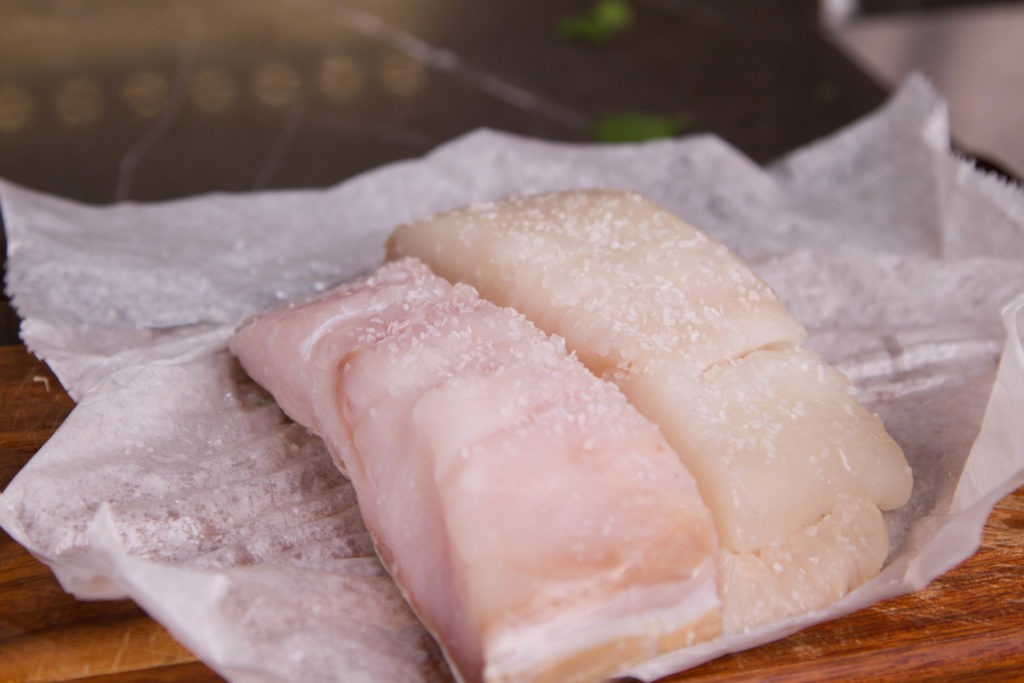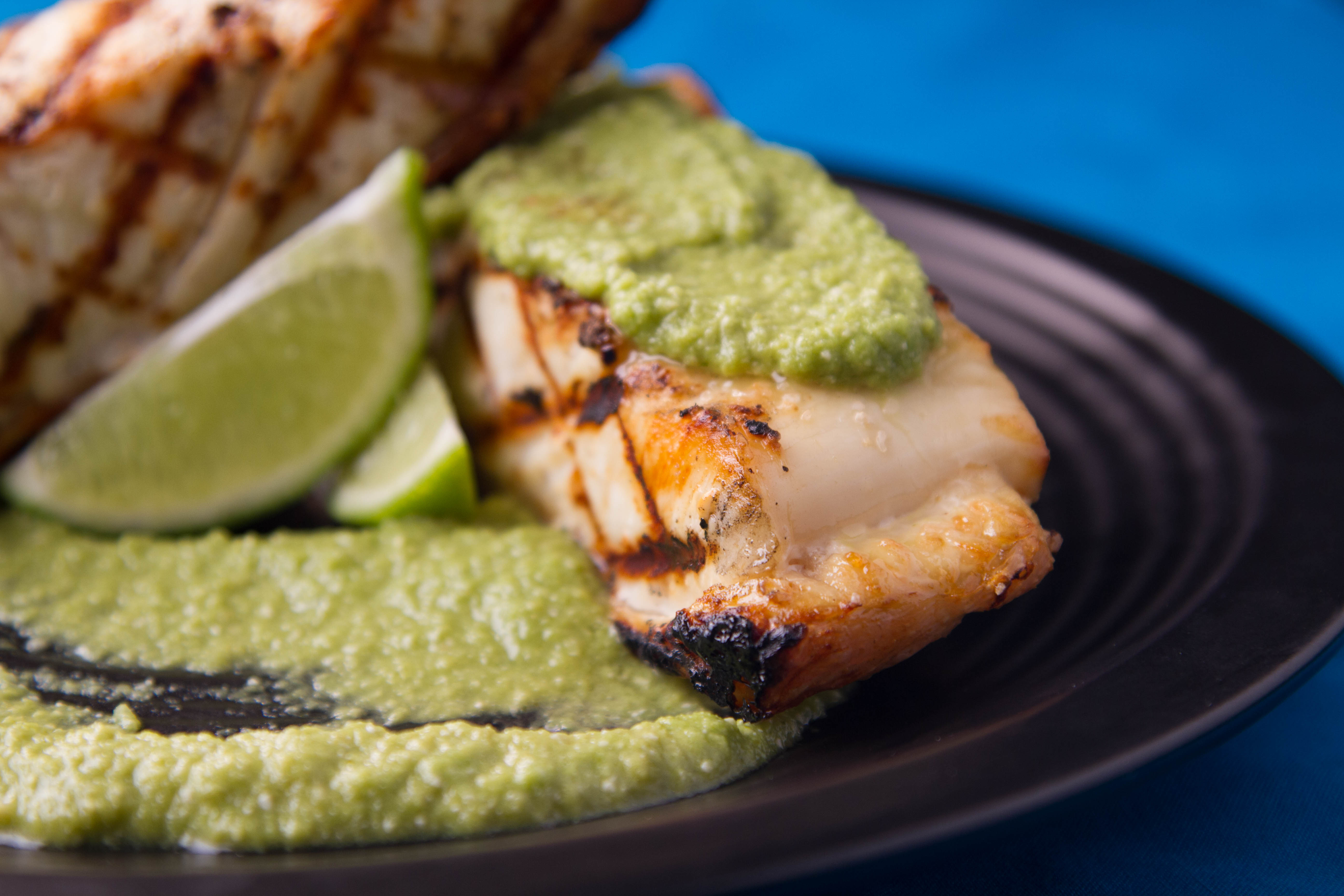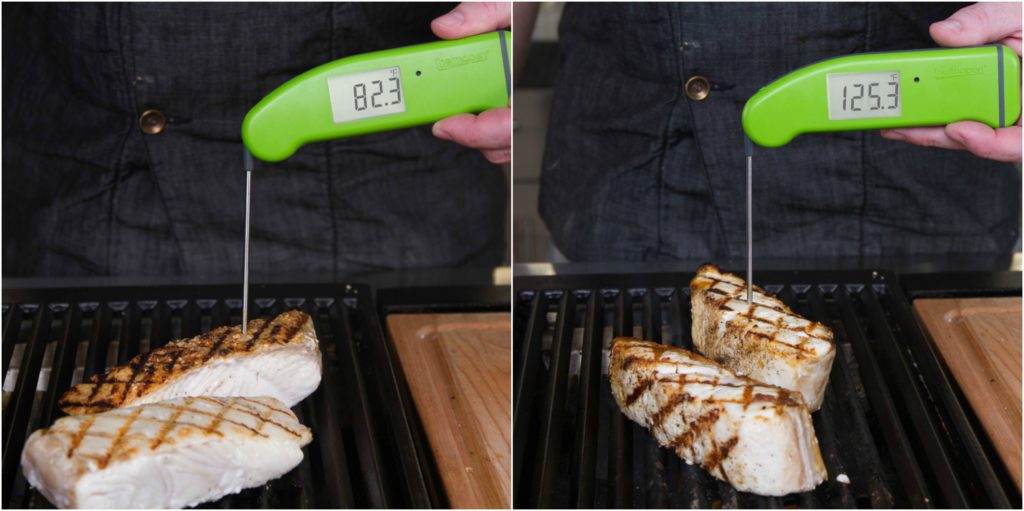Thermal Secrets: How to Grill Halibut
Halibut is a great fish to incorporate into any recipe that calls for whitefish, and can even be used as a substitute for chicken in the right dish. When grilled properly it is firm and flaky, and surprisingly mild.
However, halibut can be a little temperamental to prepare correctly. Its low-fat content gives it a reputation for drying out easily and becoming overcooked. That low oil content can also create problematic interactions with your cooking surface: sticking can cause the delicate flaky muscle to fall apart, rendering a costly fillet nearly unrecognizable.
To get the best flavor, season your fish with salt and pepper before grilling, and grill over moderately high heat. 
Three Tips to Grilled Halibut
Here are a few of our thermal secrets to help avoid leaving your guests high and dry with an overcooked piece of grilled halibut:
Know the Right Internal Temperature for Halibut
Before you get started it’s important to know where you’re going. Identify your ideal internal temperature, then do your best to get as close to it as possible. For a firm-but-flaky fish, shoot for a perfect medium (130 to 135°F). The center will be opaque, but not glossy or pink.
If a rare, or medium-rare is more to your liking, look for temperatures around 120°F for rare and 125°F medium rare.
When grilling over high heat remember that as your halibut rests, latent heat on and right below the surface of the fish will make its way to the center causing the internal temperature to rise by as much as 5°. Be prepared to remove your halibut from the heat a full 5° before it hits your ideal temperature to account for this carryover cooking.
Monitor the Internal Temperature of Your Halibut While it Cooks
Halibut is so easy to overcook that we recommend monitoring the fillet with a Thermapen while it cooks. A few seconds (or degrees) too long and an otherwise perfect main course can be rendered unpalatable.
An instant-read thermometer, like the Thermapen Mk4, is ideal for checking your halibut’s internal temperature as it sits on the grill. The Thermapen’s thin-tip probe is perfect for navigating the delicate flaky tissue characteristic of halibut.
As a general rule, fish takes a total of 10 minutes to cook per inch of thickness. This is just a guideline but can help you know what to expect. give half that time to each side of the filet, and monitor the temperature especially on the second side.
Avoid Sticking by Using the Right Oil
As we said earlier, halibut is susceptible to sticking to grill grates because of its low-fat content. A generous coat of just the right oil on your grill grates can make all the difference.
The trick is to select an oil that can withstand the high temperatures on the grill. Cooking for Engineers has put together a chart that identifies various oils and their smoke points. The smoke point is the temperature at which the fat in oil begins to break down. It will usually emit a harsh smell and may affect the overall flavor of the food.
Brush your grill grates clean and generously coat with an oil that has a high smoke point. Cooking for Engineers recommends using an Extra Light Olive Oil that is readily available on any grocer’s shelf and has a relatively high smoke point of 468°F.
Armed with these three thermal secrets, your chances of grilling the perfect piece of halibut is all but guaranteed.
More on Key Seafood Temperatures
 Cooking Temps |
 for Seafood |
|---|



